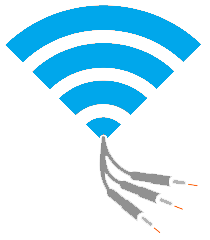Fibre

Whats the difference between capped & uncapped Internet Access?
The performance of Capped accounts and Uncapped accounts differ in subtle ways. Generally Uncapped Fibre runs off a higher ‘contention ratio’ than Capped Fibre.
This means that generally more users are allocated to share a certain amount of bandwidth in Uncapped than in Capped. This means that the number of users downloading at any one time affects Uncapped more than Capped who enjoy a premium quality of bandwidth. At any given moment if a lot of users are busy simultaneously downloading, then Uncapped will be slower than Capped.
A very simplistic metaphor for this would be:
Uncapped is like eating at a Pizza place on ‘All You Can Eat’ night. The speed you get your separate single slices of pizza delivered to you is dependent on how busy the restaurant is at that moment. This means it may take slightly longer to eat a whole pizza but you can eat more over time.
Capped is like eating at that same Pizza place but ordering the pizza size you want off the menu – you’ll get your full pizza quicker and can eat it faster but you have a set amount to enjoy.
In essence Capped is a premium service if speed is a massive issue to you. If speed isnt a huge concern but your bandwidth requirements are heavy (i.e. you do a lot of downloading and uploading) then Uncapped is the way to go.
You will find that the speed of Capped vs.Uncapped differs mostly during office hours. As such, if speed is of primary importance to you during office hours then capped may be the best solution for you. Alternatively you may want to look at an EEE (Ethernet Express) link which gives you full, unshared bandwidth with guaranteed duplex throughput (i.e. you get the full throughput capacity of the link whether downloading or uploading (very useful when working remotely or file sharing between branches).
